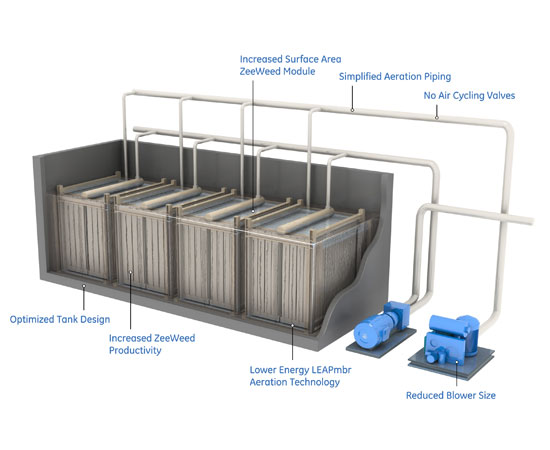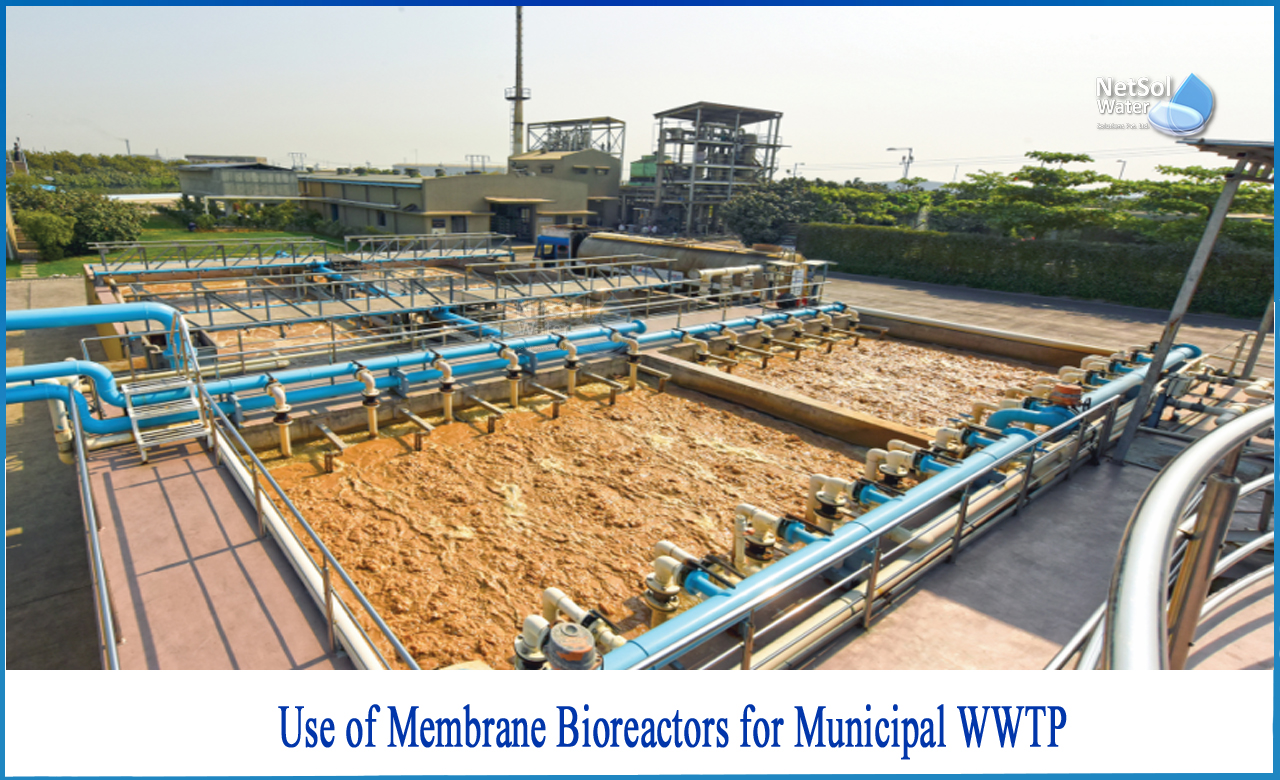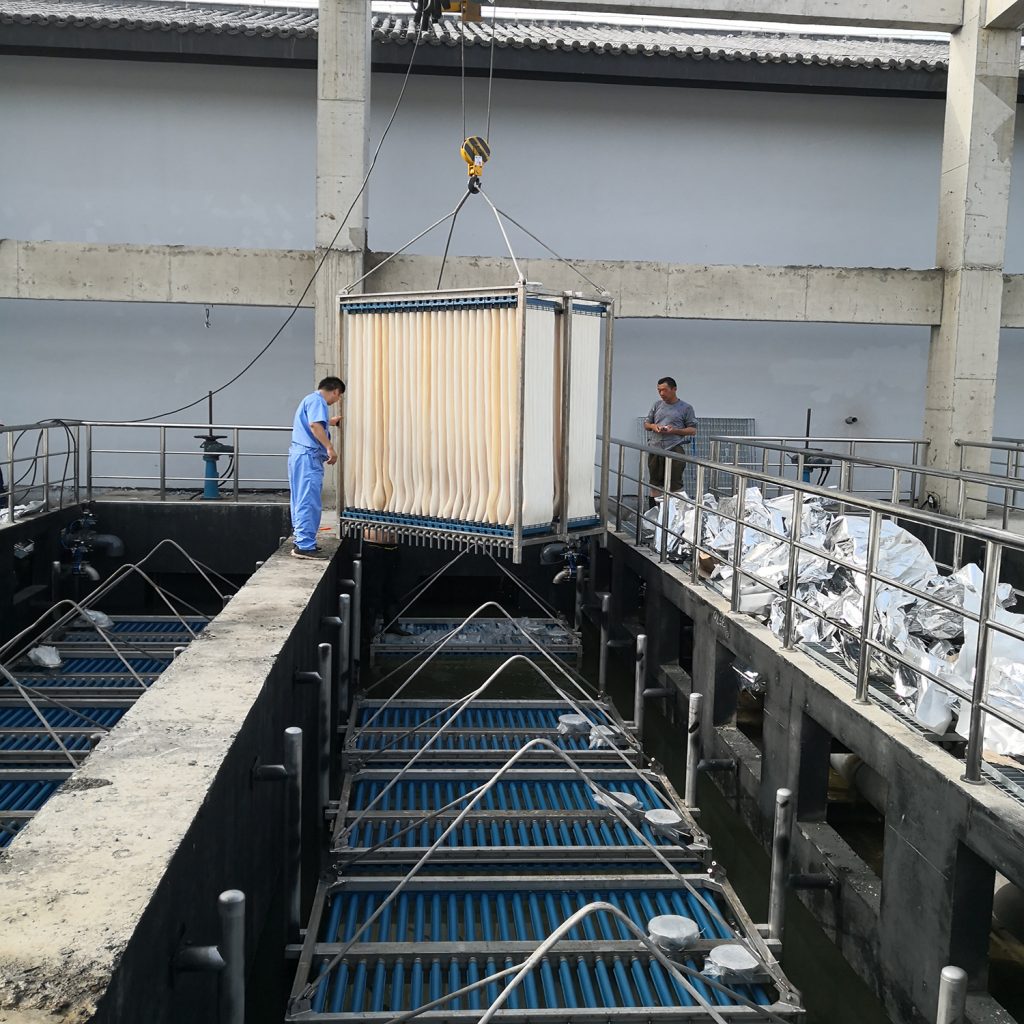Exploring the Environmental Impact of Membrane Bioreactor in Wastewater Treatment
Exploring the Environmental Impact of Membrane Bioreactor in Wastewater Treatment
Blog Article
Just How Membrane Bioreactors Are Changing Water Purification Equipments
The development of membrane bioreactors (MBRs) represents a considerable innovation in the area of water filtration, combining biological treatment processes with advanced membrane filtration technologies. As global water scarcity intensifies, the role of MBRs in assisting in drinkable water reuse and sustainable water management becomes increasingly critical.
Overview of Membrane Bioreactors
Membrane layer bioreactors (MBRs) stand for a considerable development in water purification technology, as they incorporate organic treatment processes with membrane layer purification. This assimilation improves the efficiency of wastewater treatment by making use of microbes to break down organic contaminants while at the same time employing semi-permeable membrane layers to different treated water from put on hold solids and virus.
The MBR system generally includes an organic reactor where the microbial population metabolizes contaminants, adhered to by a membrane layer filtering device that preserves biomass and enables only tidy water to go through. This dual capability leads to higher effluent top quality contrasted to traditional treatment approaches. MBRs can be operated in both set and constant flow settings, using flexibility in layout and application.
In Addition, MBRs are defined by their compact footprint, making them ideal for urban setups with space restrictions. Membrane Bioreactor. They also enable the healing of water for reuse, thus adding to water sustainability campaigns. While MBR innovation has actually gotten popularity in metropolitan and industrial applications, its functional complexities and power needs necessitate cautious factor to consider throughout implementation. Generally, MBRs go to the forefront of enhancing water therapy performance and quality, showcasing the potential for ingenious remedies in ecological monitoring.
Advantages of MBR Innovation
The combination of organic therapy with membrane layer filtering uses countless benefits for water filtration procedures. Among the key advantages of Membrane layer Bioreactor (MBR) innovation is its capability to successfully get rid of both inorganic and organic contaminants, resulting in top notch effluent. The membrane layers function as a physical obstacle, stopping put on hold solids and microorganisms from going through, which improves the overall safety and integrity of cured water.
Furthermore, MBR systems need a smaller footprint compared to standard therapy techniques, permitting more efficient room use. This small design is specifically helpful in metropolitan settings where land is restricted. MBRs additionally demonstrate operational adaptability, fitting varying influent top qualities and flow rates without considerable efficiency destruction.
In addition, the process offers enhanced nutrient removal abilities, especially for nitrogen and phosphorus, which are critical for protecting against eutrophication in getting waters. The reduced sludge manufacturing connected with MBR modern technology likewise translates to reduce disposal costs, making it a cost-effective option over time - Membrane Bioreactor. In general, the benefits of MBR technology placement it as a leading choice for sustainable and cutting-edge water purification systems, resolving both ecological and financial issues
Applications in Water Filtration
Applications of Membrane Bioreactor (MBR) innovation in water filtration are impactful and varied, resolving various therapy requires across several industries. MBRs effectively integrate organic treatment processes with membrane filtering, making them excellent for community wastewater therapy, commercial effluent management, and even drinkable water reuse campaigns.
In metropolitan setups, MBRs are increasingly employed to enhance the quality of treated wastewater, enabling for compliance with strict discharge guidelines and assisting in the recycling of water for watering and non-potable usages. Their small style likewise makes them appropriate for metropolitan atmospheres where area is limited.
Industrially, MBR innovation is used to treat process water and wastewater, particularly in sectors such as food and beverage, drugs, and fabrics. By successfully eliminating pollutants and suspended solids, MBRs assist markets lessen environmental impacts while recovering beneficial sources from wastewater streams.
Additionally, MBRs are acquiring traction in decentralized water therapy applications, where small systems can be deployed in remote areas or creating areas. This adaptability enables neighborhoods to achieve sustainable water management options, enhancing accessibility to clean water while minimizing reliance on traditional therapy techniques.
Case Researches and Success Stories

In another instance, a textile production facility in Bangladesh embraced MBR technology to resolve its wastewater challenges. The system minimized chemical oxygen demand (COD) levels from 1,200 mg/L to much less than 100 mg/L, thus fulfilling regulatory criteria and considerably decreasing environmental influence.
The University of Cape visit the site Town's MBR installment has verified effective in treating greywater for non-potable reuse on university. This project not only preserves potable water however additionally acts as an instructional model for sustainable techniques.
Furthermore, a seafood handling plant in Norway utilized MBR innovation to deal with effluents having high levels of raw material, attaining over 90% pollutant removal. These study underscore MBR innovation's convenience and its important function in boosting water top quality across diverse applications.
Future of Water Treatment Solutions
As worldwide water shortage and air pollution obstacles magnify, ingenious water therapy remedies are coming to be increasingly vital to make sure lasting access to tidy water. The future of water therapy hinges on the assimilation of advanced innovations that improve the efficiency and efficiency of purification procedures. Membrane layer bioreactors (MBRs) are at the center of this advancement, integrating biological treatment with membrane filtration to produce top notch effluent appropriate for different applications.

Arising patterns such as resource recovery from wastewater, consisting of nutrients and power, will certainly even more transform therapy centers into environmentally friendly hubs. Developments in nanotechnology and membrane products promise improved efficiency and longevity of purification systems.

Final Thought
In conclusion, membrane layer bioreactors represent a substantial improvement in water purification modern technologies, efficiently combining biological therapy with sophisticated membrane layer filtration. The countless advantages, consisting of improved effluent top quality and reduced spatial demands, make MBRs particularly appropriate for city applications. Their function in safe and clean water reuse and sustainable water administration highlights their importance in attending to global water shortage obstacles. Continued r & d will better boost the efficacy and fostering of MBR innovation, ensuring a durable future for water treatment services.
The appearance of membrane layer bioreactors (MBRs) stands for a significant development in the field of water purification, merging biological treatment processes with advanced membrane filtration technologies. As worldwide water shortage intensifies, the role of MBRs in facilitating potable water reuse and lasting water management becomes increasingly crucial. They likewise enable the recovery of water for reuse, thus adding to water sustainability campaigns.As international water shortage and contamination challenges magnify, innovative water therapy options are ending up being increasingly important to ensure lasting accessibility to clean water. Their role in safe and clean water reuse web link and lasting water administration highlights their importance in addressing international water shortage challenges.
Report this page